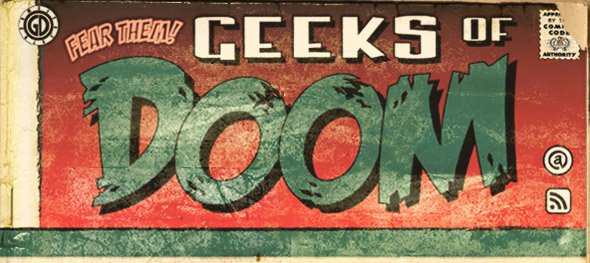
The Three Colors Trilogy
Blue, White, Red
DVD | Blu-ray
Directed by Krzysztof Kieslowski
Starring Julie Delpy, Juliette Binoche, Irene Jacob
The Criterion Collection
Release date: November 15, 2011
Star Wars. Spider-Man. X-Men. When it comes to trilogies, the mind starts off thinking of the biggest of big summer tentpole blockbusters. However, when one must consider what is truly the greatest collection of interconnected narratives that cinema has to offer, this writer thinks the conversation starts and stops with something, a bit more minute.
From the thinking man’s auteur Krzysztof Kieslowski, Blue, White, and Red, better known as the Three Colors Trilogy, is simply the greatest threesome of films ever put to cellouloid. And the newly released Criterion Collection Blu-ray box set of this epic masterpiece is just the type of release a classic like this sucker needs, and deserves.
First off, the films. Where to start.
With the first film, 1993’s Blue, comes not only the real gem (if there can only be one), of both this collection of films, and the early 1990’s arthouse movement in general. Starring Juliet Binoche, Blue follows the story of a woman, and her struggle to cope with the sudden death of her daughter and husband. A haunting tale of a woman dealing with both grief and her attempt to overcome her haunted past, the film is one of the true masterpieces of the era, and is also one of the best films from Kieslowski, one of cinema’s greatest poets.
The true star of this first entry in the trilogy is Kieslowski. However, it’s not only his direction, which is admittedly as meditative and philosophical as he had been known to be, but it’s also his ability to beautifully blend the score (an operatic piece from Zbigniew Preisner), as well as the brilliant cinematography that makes this piece so moving.
Binoche shines here as a woman with both an immense amount of baggage and also a will to shun anything and everything around her in order to end that portion of her life for good. It’s easily Binoche’s strongest performance, which for an actress as immensely talented as her, that’s saying more than something.
The score here, from Preisner, is one of the greatest scores of this era, both technically, and also how it is used. The score is relatively mundane during much of the film, but it is used to great dramatic effect when Kieslowski deems fit. Swooping in for seconds on end, the score is almost as pivotal as the marvelous and unprecedented cinematography from Slawomir Idziak.
And then there is White, the middle child of this trilogy. Starring Julie Delpy, the film focuses on a husband and wife duo who are on the outs. A Polish man named Karol Karol and his wife are having relationship issues when the man decides to jump ship to Poland after being sued for a divorce, this is both admittedly the lightest film of the trilogy in both titular color, and what that color ultimately goes to represent.
In the creation of this trilogy, the creative team here broke the three films down into the three colors of the French flag, and also used what those colors ultimately mean to their advantage. With Blue it was liberty (as seen with the liberty felt and strived for from the lead’s past), and in White it would be equality. The film itself is, on the surface, a black comedy romantic tale of errors, but at its core, it is a perfect depiction of a world, Europe, which found itself on the precipice of an economic imbalance of epic proportions. Eastern and Western Europe were about as far off from one another economically as a region can get, and that is palpable here in this light, but ultimately moving, piece of black comedy.
Delpy is great here, but it’s Zbigniew Zamachowski who steals each scene here, as the male lead in this romantic tale. There is a great deal of emotional depth plumed here by both parties involved, but it’s Zamachowski’s arch that feels the most pertinent and emotionally moving. The score, while ever present, isn’t as bombastic as the opera scene in the previous film, and while the story of a person overcoming a personal hardship is also existent here as well (and will be seen in Red as well), the comedy gives this film a welcome dash of sarcasm and brevity, missing from the heavy pieces of drama that would precede and follow this film. Overall, while the film itself may be far lighter than the films that would be its bookends, it’s no less moving, nor is it an less beautifully crafted, shot, or acted, particularly from its leads, including Delpy who along with her other women leads, seem to embody this woman on the brink that seems to be Kieslowski’s intellectual and conceptual muse for much of his career.
Finally, we have Red, the finale to the trilogy.
Starring the gorgeous and immensely talented Irene Jacob, the film follows a pair of stories, both intertwining in the most beautiful of ways. Set in Geneva, the film follows a retired judge and a melancholic runway vixen, whose lives intersect in ways that neither of them had previously imagined.
Fraternity. With Red comes the focus on that ideal, which can be seen perfectly in the friendship found and bred between our two leads. Kieslowski’s final film, Red is a moving look at the relationships that no one truly means to create. Sometimes, the most important and influential relationships that one can have are the ones that come naturally. Two people bonding over time and through similar struggles, leads to some of the most pure emotional connections in life, and that is inherently what can be found at this film’s core.
The performances here are arguably the best in the trilogy, particularly Jacob, whose melancholic character is imbued with a sense of truth and reality that in other hands, would have been far more cartoonish. The editing by Jacques Witta is easily the best in the trilogy, and the film is almost stolen by the stone faced performance from brilliant actor Jean-Louis Trintignant. Not as philosophical as Blue, and not as light as White, Red is able to strike a chord of emotional resonance that seems to be missing in many other works from the early “˜90s. These films all have their moments, but in this piece, the emotion is heightened to its greatest extent.
And with a film as great as this trilogy produced, a Blu-ray release needs to be just as brilliant. That’s exactly what we’ve received thanks to The Criterion Collection. Each film comes with commentary from the film’s lead actress on select sequences, as well as a video essay from people like Annette Insdorf and Dennis Lim, talking about each film’s impact, inspiration, and production. A lesson taught by Kieslowski focusing on an aspect of each film also makes its way onto this release, giving the box a brilliant sense of depth, and a hands on look into the creative process of one of film’s most creative minds. A cavalcade of interviews can be found here, as well as a series of documentaries on the making of each film, Red‘s premiere at Cannes, and also the impact of the films. Finally, a series of shorts directed by Kieslowski, as well as few short documentaries are featured here, as well as feature length documentary featuring the auteur talking about his life and his work. Simply put, this is the deepest Criterion release of the year, if not longer.
Rounded out by a doorstop of a booklet, Criterion’s Three Colors Blu-ray release is one of the greatest home video releases in a long time, if not ever. Three of the greatest films of this generation, Three Colors is a trilogy unlike any other. A moving ode to three of the truest ideals of human nature, each film is a powerful bit of cinema from one of the artform’s greatest poets. If you are a fan of film, or have a heartbeat, you owe it to yourself and those you will leave in this world to buy this release, and pass it on for generations to come.






No Comments »
No comments yet.
RSS feed for comments on this post. TrackBack URL
Leave a comment